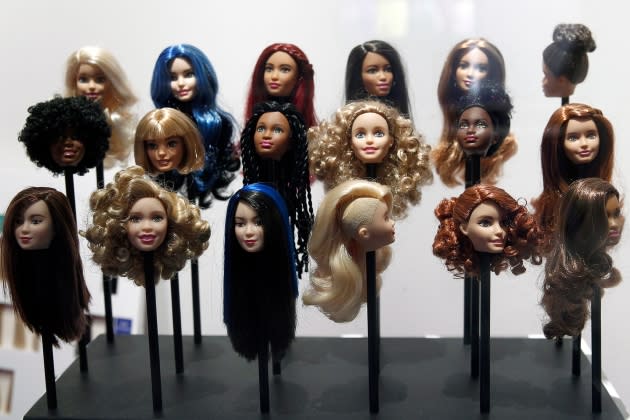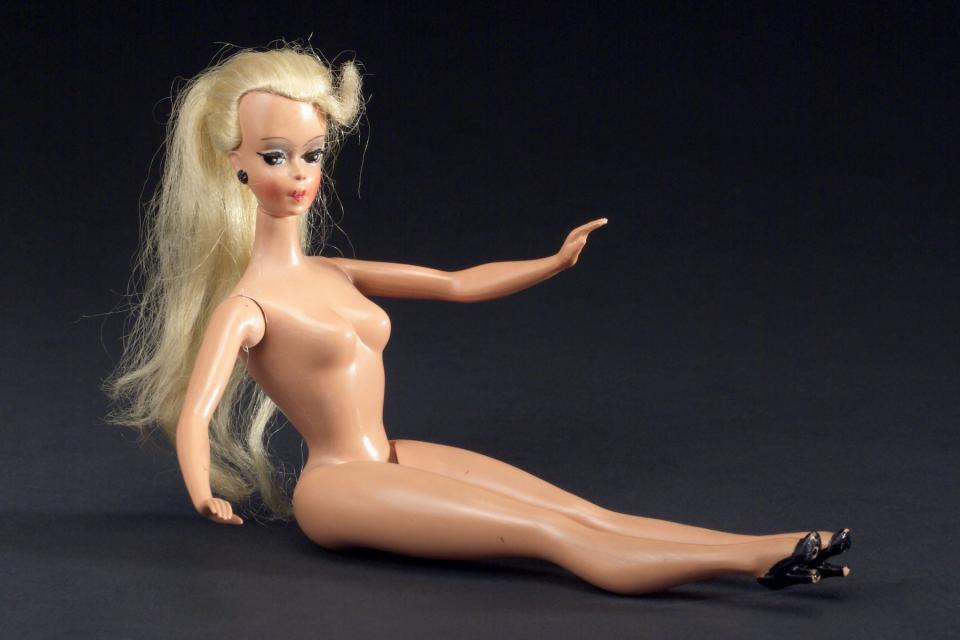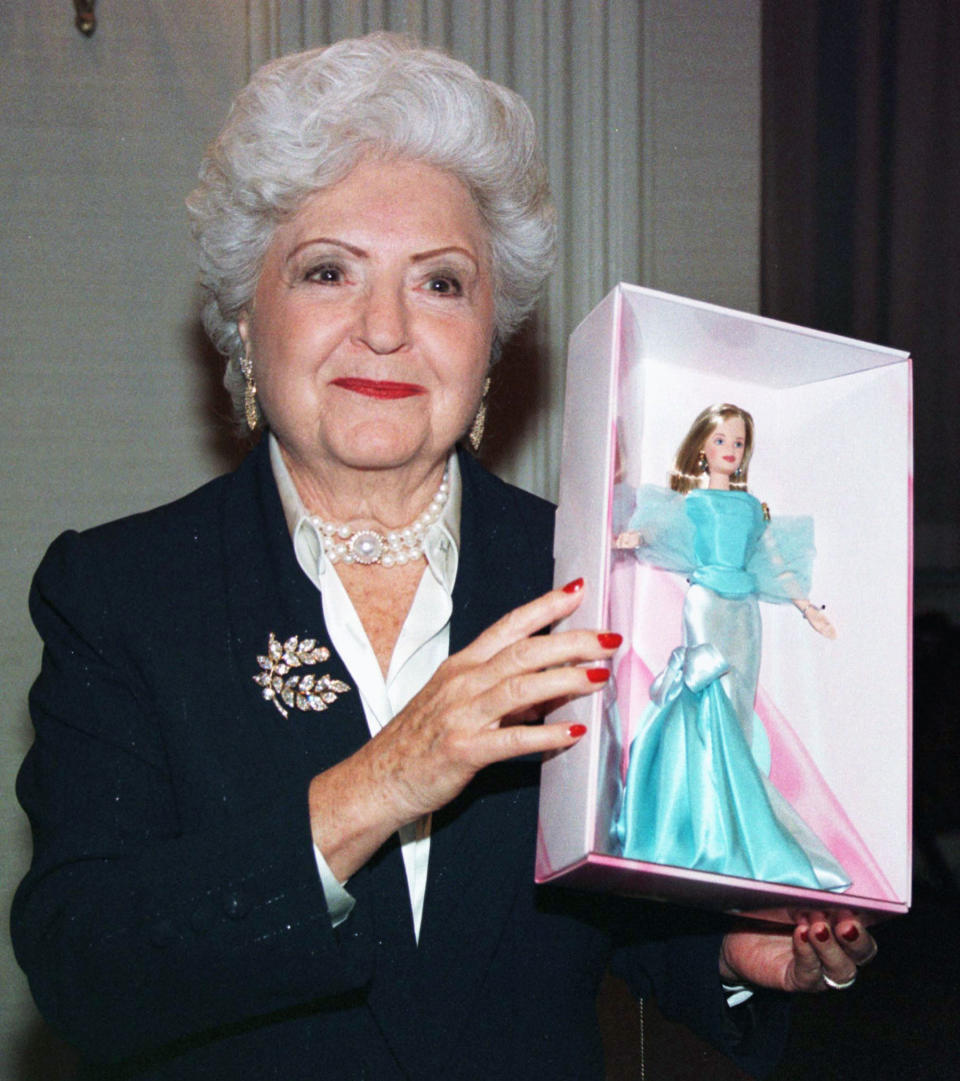The Dark Side of Barbie: Crime, Racial Issues, and Rampant Sexism
- Oops!Something went wrong.Please try again later.
- Oops!Something went wrong.Please try again later.
- Oops!Something went wrong.Please try again later.

Toward the end of Greta Gerwig’s Barbie movie, our titular heroine’s (Margot Robbie) journey culminates in the arrival of an unexpected guest: Her creator, the late Ruth Handler (played by Rhea Perlman).
Having just spent two hours confronting the reality that Barbies didn’t actually solve all inequality and are, in fact, workshopped by a bunch of guys sitting atop a phallic skyscraper, Barbie is incredulous to learn that a woman was her creator all those years ago.
More from Rolling Stone
“I am Mattel,” Ruth proclaims proudly.
Then comes the kicker: “At least, until the IRS got to me.”
In a movie where Barbie and Ken dolls can enter the real world as life-sized versions of themselves, the sheer number of jabs that co-writers Gerwig and Noah Baumbach are able to make at Mattel feel even more fantastical.
Barbie might be the latest in a tidal wave of IP-driven blockbusters, but no other brand at the center of this trend comes close in terms of cultural prevalence or controversy. Barbies have been omnipresent in generations of childhoods, with over a billion dolls sold since they hit the scene in 1959, but the older you get, the more fraught conversations surrounding the brand’s legacy become. Barbie can now be “every woman,” but does that really account for years of pushback? We’ve all heard the criticisms about the dolls’ impossibly tiny waists and inescapable association with a narrow, hyperfeminine, blonde ideal of womanhood. But Barbie’s actual history happens to be complicated and significantly more bizarre than pop culture would suggest.
As the Barbie movie coyly points out in its opening moments — a shot-for-shot reimagining of 2001: A Space Odyssey’s “Dawn of Man” sequence — the doll represented something utterly new when she stepped onto the scene in the late 1950s. Before, girls’ toy options were essentially limited to baby dolls and play-motherhood. But Barbie represented a different vision of white womanhood in line with rising American consumerism at the time. You didn’t just have to be a homemaker, you could also be a lady about town with oodles of fashionable clothes. You could even have boobs.
Handler famously came up with Barbie after noticing how her daughter Barbara and her friends were far more captivated by the adult paper dolls they saw in comic books. At the time, she was the executive vice president of Mattel, which had grown from a start-up in 1944 to America’s third-largest toy company. Yet when she pitched the idea of an adult doll to her husband and co-founder Elliot, he remained unconvinced that such a toy had mass market appeal.
Things took a turn for the better during a family vacation in 1956. While exploring Germany, Handler and Barbara were stunned to discover Bild-Lilli, a fashionable, grown-up doll just like the one Handler had imagined. Armed with real-life proof that there was a place for Barbie in the toy world, she got to work on designs. In 1959, Barbie was finally unveiled to the public at the American International Toy Fair.
That G-rated story leaves out one key detail: Lilli was originally a sex toy. Created as a cartoon character for the Hamburg tabloid Bild-Zeitung, her adventures revolved around sustaining her lavish lifestyle through sex work with wealthy men.
In one cartoon, Lilli covers her naked body with a newspaper.
“We had a fight, and he took all my presents,” she explains to a friend.
By 1953, Lilli had become so popular that Bild-Zeitung began selling her as a toy in sex shops, tobacco kiosks, and the like. Although she started off as a popular gag gift among men, children eventually began playing with her as well — hence the Lilli doll the Handlers encountered in a toy shop window.
Naturally, a NSFW doll backstory wouldn’t convince American parents to whip out their wallets, so Barbie was introduced as a “teen model” instead. The two dolls looked so similar that the manufacturer behind Lilli sued the Handlers in 1961, claiming that Mattel “falsely and misleadingly represented itself as having originated the design.” The company settled the case out of court and went on to buy the German doll’s copyright and patent rights in 1964. Lilli, we hardly knew ya!

As Handler’s godlike appearance at the end of the Barbie movie suggests, she was a trailblazer in her own right. Born the 10th child of working-class Polish-Jewish immigrants, she didn’t have nepotism or generational wealth to fall back on. Yet in a time when very few women held positions of power, she spearheaded her own company to achieve just that.
“Yes, it was Elliot’s designs,” she once said in an interview. “Yes, it was Elliot’s name. Yes, he was very much a part of it in my mind. But I actually started Mattel.”
Handler’s legacy persisted long after her death in 2002, but her actual creative control of Barbie was cut short in the early Seventies. After she and Elliot were indicted for inflating sales records to boost Mattel stock, Handler was ousted from her position as the company’s president and charged with five years of probation. Although she publicly maintained her innocence, the woman behind Barbie wouldn’t be invited back into the Mattel fold until 1994, when Jill Barad — the first of the company’s two female CEOs to date — signed her on as a brand spokeswoman.
As the decades passed, Barbies gradually became available in a wide range of races and body types, a change reflected in the diverse Barbieland fantasy of Gerwig’s film — not that Handler initially cared too much about Barbie representing every woman.
In her 2009 book Barbie and Ruth: The Story of the World’s Most Famous Toy and the Woman Who Created Her, Robin Gerber notes that Handler “was not political or prone to dwell on the root of cultural standards.”
“If girls were being told they should wish they were busty blonds, Mattel would profit from that message,” Gerber writes.
So yes, Barbie eventually prioritized the ability to be able to market and, most importantly, sell their dolls to as many demographics as possible. Even so, Mattel has made plenty of clunky and downright troubling choices along the way.

Perhaps the most enduring criticism of Barbie is the unrealistic body standards that she presents to girls. With her impossibly tiny waist and ample bosom, it’s really no surprise that Handler borrowed so heavily from a sex doll. The accessories that Mattel sold in the ensuing years didn’t do much to assuage people’s concerns, either. The 1963 “Barbie Babysits” doll came with a book titled How To Lose Weight, which advised: “Don’t Eat!” The same book was sold with the 1965 “Slumber Party Barbie,” along with a scale permanently set to 110 pounds. Mattel finally began producing “plus-size” doll models in 2016, and dolls currently come in five different body types.
Yet for all the Barbie movie narrator’s (Helen Mirren!) assurances that Barbie is now every woman, it’s telling that when Robbie’s “Stereotypical Barbie” begins malfunctioning after absorbing some of her human owner’s existential crises, one of the most terrifying changes she can imagine is living with permanent cellulite.
The Barbie brand has also stumbled in regard to race, most memorably with the 2001 release of its “Barbie Oreo School Time Fun” dolls, which were a collaboration with Oreo manufacturer Nabisco. While the 1997 edition only included white dolls, a 2001 release featured both Black and white versions. As many Black critics pointed out, it’s common knowledge that the word “Oreo” is often used as a derogatory racist term aimed at Black people who are accused of somehow acting like white people (a.k.a. “Black on the outside, white on the inside”). Mattel quickly pulled Black “Barbie Oreo School Time Fun” dolls from shelves as a result.
Barbie has been a career woman in some shape or form since she was introduced. According to Mattel, she’s had over 200 careers, with dolls taking on more STEM roles in recent years. The move also happens to be a remedy for the backlash surrounding dolls who, intentionally or not, tapped into misogynistic stereotypes concerning women’s aptitude for math and science. In 1992, the American Association of University Women pushed back after Mattel released a “Teen Talk Barbie” programmed to say 270 possible phrases, including “Math class is tough!” (Mattel later recalled the phrase). By 2014, the brand caught STEM-related flack once again, this time for depicting Barbie as incapable of fixing a computer virus without the help of two male friends in the book “I Can Be a Computer Engineer” (the book was later removed from Amazon).
One of the greatest joys of Gerwig’s Barbie is watching the beloved director successfully tell another moving female coming-of-age story without having her distinctive style tapered by excessive studio notes. In between using Barbies and Kens to satirize our culture’s ever-present anxiety surrounding gender norms, Gerwig and Baumbach also have a blast writing gags for some of the weirdest characters in Barbie history. Some of these discontinued dolls, like Barbie’s pregnant friend Midge (Emerald Fennell) and Ken’s “buddy” Allan (Michael Cera), are allowed to meander aimlessly around Barbieland. But others are cast out and forced to live with Kate McKinnon’s weird Barbie, a perfect encapsulation of the hairless, scribbled-on Barbies that have been crammed in basement corners for eons. Toward the end of the movie, they get their time to shine. There’s “1993’s Earring Magic Ken,” who sported an accessory that Chicago Reader critic Dan Savage noted looks suspiciously like the “cock ring” sex toys favored by gay men at the time; 2009’s “Sugar Daddy Ken,” who is definitely named after his dog and nothing else; 2010’s “Barbie Video Girl,” whose built-in video camera was cool and all until the FBI noticed it could be used for child porn; and 1964’s “Growing Up Skipper” doll, who grows boobs if you twist her left arm.
Whether you end up loving or hating the Barbie movie, Mattel’s big Hollywood venture is just getting started — according to The New Yorker, the company has 45 films in development based on its IP. But without a brand as iconic as Barbie or a filmmaker as ingenious as Gerwig, who’s to say they’ll succeed? Mattel can go full steam ahead, but should their surrealist Barney movie or their horror-themed Magic 8 Ball movie flop, they’ll have no one but themselves to blame.
Best of Rolling Stone

